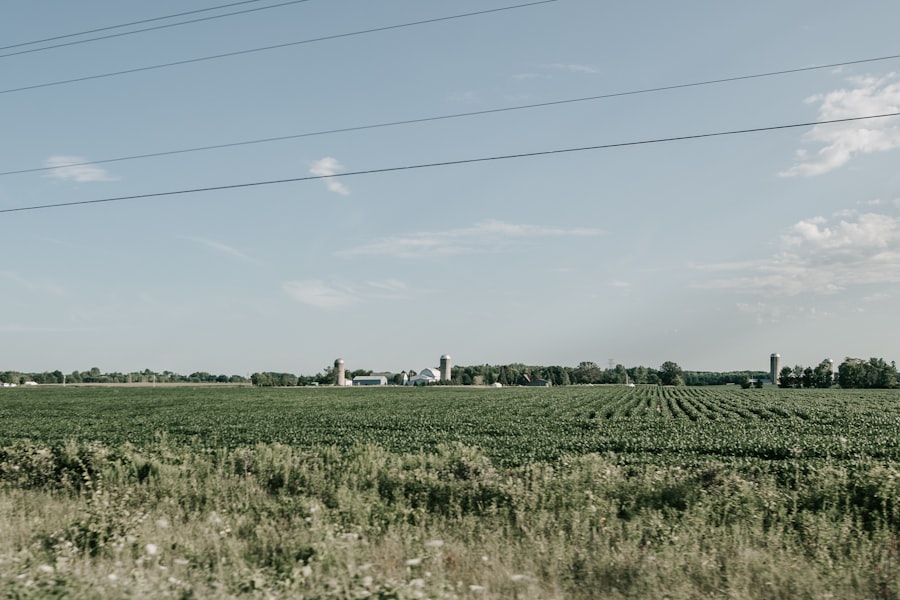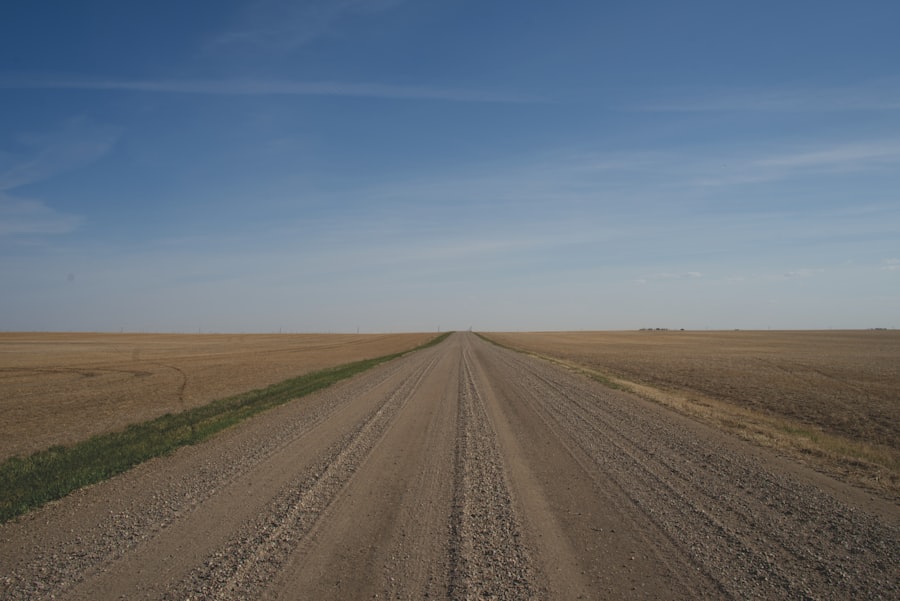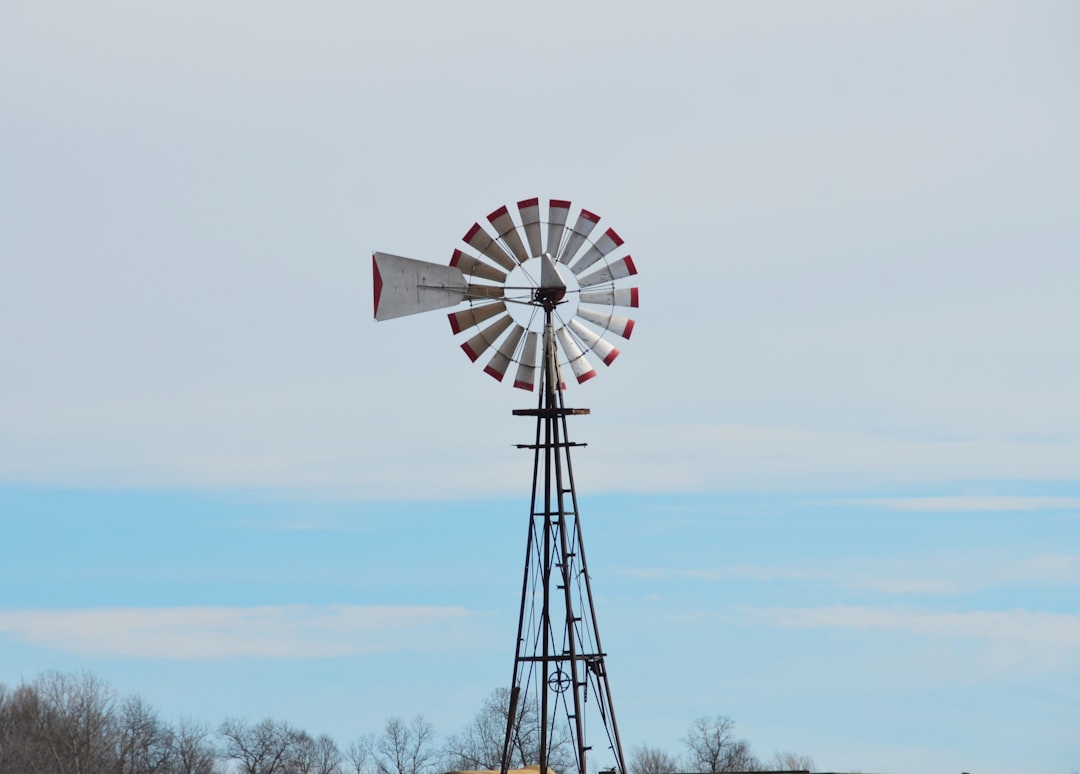The state of Kansas, often celebrated for its rich agricultural heritage and vast plains, has been experiencing a notable decline in population over recent years. This trend has raised concerns among residents, policymakers, and economists alike, as it poses significant challenges to the state’s future. The decline is not merely a statistical anomaly; it reflects deeper issues that affect the quality of life for those who remain and the viability of communities across the state.
As people migrate to urban centers or other states in search of better opportunities, Kansas faces a crossroads that demands urgent attention and innovative solutions. Understanding the factors contributing to this decline is essential for grasping the broader implications for Kansas. The interplay of economic conditions, job availability, educational opportunities, and social issues creates a complex landscape that influences residents’ decisions to stay or leave.
As the state grapples with these challenges, it becomes increasingly important to explore the underlying causes and potential remedies that could reverse this trend and revitalize Kansas for future generations.
Key Takeaways
- Kansas has been experiencing a decline in population, which has been attributed to various economic, social, and environmental factors.
- Economic factors such as lack of job opportunities and high unemployment rates have contributed to the population decline in Kansas.
- The impact of agriculture and farming on the population has been significant, with many rural areas experiencing a decrease in residents.
- Educational opportunities and brain drain have also played a role in the decline, as many young people leave the state for better prospects elsewhere.
- Healthcare access, quality of life, and cultural attractions have also been factors in the population decline in Kansas.
Economic Factors Leading to Population Decline
The economic landscape of Kansas has undergone significant changes over the past few decades, contributing to its population decline. Historically, the state thrived on agriculture, but shifts in global markets and farming practices have led to economic instability. Many small farms have been unable to compete with larger agricultural enterprises, resulting in a consolidation of land and resources.
This consolidation not only affects farmers but also diminishes the economic vitality of rural communities that depend on agriculture for their livelihoods. As local economies falter, residents are left with fewer options, prompting many to seek opportunities elsewhere. Moreover, the lack of diversification in Kansas’s economy has exacerbated the situation.
While some urban areas have seen growth in sectors such as technology and healthcare, many rural regions remain heavily reliant on agriculture and manufacturing. This dependence makes them vulnerable to economic downturns and market fluctuations. As industries evolve and adapt to new technologies, those communities that fail to keep pace are left behind, leading to job losses and a shrinking workforce.
The combination of these economic factors creates a challenging environment for residents, ultimately driving them away in search of more stable and prosperous conditions.
Job Opportunities and Unemployment Rates

Job opportunities play a crucial role in determining population trends, and Kansas is no exception. The state has faced challenges in maintaining a robust job market that can attract and retain residents. While some urban centers like Kansas City and Wichita have experienced growth in certain sectors, many rural areas struggle with high unemployment rates and limited job prospects.
This disparity creates a significant divide between urban and rural populations, leading to a migration pattern where individuals leave their hometowns in search of better employment opportunities. The unemployment rates in various regions of Kansas reflect this troubling trend. In some rural counties, unemployment rates have remained stubbornly high, often exceeding the national average.
This situation is compounded by the fact that many available jobs do not offer competitive wages or benefits, making it difficult for families to sustain themselves. As young people graduate from high school or college, they often find themselves facing a stark choice: stay in a community with limited job prospects or relocate to cities where they can find meaningful employment. This decision not only impacts individual lives but also contributes to the overall decline of population in Kansas.
Impact of Agriculture and Farming on Population
| Metrics | Data |
|---|---|
| Population Growth | Increasing demand for food due to population growth |
| Employment | Large portion of population employed in agriculture and farming |
| Urbanization | Shift of population from rural to urban areas due to mechanization of farming |
| Food Security | Impact of agriculture on ensuring food security for the population |
Agriculture has long been the backbone of Kansas’s economy, but recent trends indicate that its influence may be waning. The state’s agricultural sector has faced numerous challenges, including fluctuating commodity prices, changing consumer preferences, and increasing operational costs. As small farms struggle to survive in an increasingly competitive market, many farmers are forced to sell their land or abandon their livelihoods altogether.
This shift not only affects those directly involved in farming but also has ripple effects throughout rural communities that rely on agriculture for economic stability. The decline of agriculture has led to a significant demographic shift in Kansas. As farms close and agricultural jobs disappear, younger generations are less inclined to pursue careers in farming or remain in rural areas.
Instead, they seek opportunities in urban centers where they can find diverse employment options and access modern amenities. This migration away from rural areas contributes to an aging population in these communities, further exacerbating the challenges they face. The loss of young people not only diminishes the workforce but also threatens the cultural fabric of these towns, as traditions tied to farming and community life begin to fade.
Educational Opportunities and Brain Drain
Education is a critical factor influencing population dynamics in Kansas. While the state boasts several reputable institutions of higher learning, access to quality education can vary significantly between urban and rural areas. Many rural communities struggle with underfunded schools and limited resources, which can deter families from settling in these regions.
As a result, young people often leave their hometowns to pursue higher education elsewhere, leading to a phenomenon known as “brain drain.” This term refers to the outmigration of educated individuals who seek better opportunities in more urbanized areas. The implications of brain drain are profound for Kansas’s future. As talented individuals leave for cities with more robust educational systems and job markets, rural communities face a depletion of skilled workers who could contribute to local economies.
This cycle perpetuates itself; as fewer young people remain in these areas, schools may continue to suffer from inadequate funding and resources, further discouraging families from moving there. To combat this trend, it is essential for Kansas to invest in educational initiatives that enhance access to quality schooling and create pathways for students to return after completing their education.
Healthcare and Access to Services

Access to healthcare services is another critical factor influencing population trends in Kansas. Many rural areas face significant challenges when it comes to healthcare availability, with hospitals closing or consolidating due to financial pressures. This lack of access can deter families from settling in these regions or prompt existing residents to relocate to areas with better healthcare options.
The consequences are particularly dire for vulnerable populations who rely on consistent medical care for chronic conditions or emergencies. Moreover, the disparities in healthcare access can exacerbate existing social inequalities within the state. Rural residents may find themselves traveling long distances for medical appointments or facing long wait times for specialized care.
This situation can lead to poorer health outcomes and increased stress for families who must navigate these challenges while balancing work and other responsibilities. Addressing healthcare access is crucial not only for improving individual well-being but also for fostering vibrant communities that can attract new residents.
Quality of Life and Cultural Attractions
Quality of life is a significant consideration for individuals contemplating relocation, and Kansas faces challenges in this area as well. While the state offers beautiful landscapes and a slower pace of life that many find appealing, it often lacks the cultural attractions and amenities found in larger metropolitan areas. Cities like Wichita and Lawrence provide some cultural offerings such as museums, theaters, and music venues; however, many rural communities struggle to provide similar experiences for their residents.
The absence of diverse recreational activities can lead to feelings of isolation among residents, particularly younger individuals seeking vibrant social scenes. As people weigh their options for relocation, they often prioritize areas with rich cultural offerings that enhance their quality of life. To counteract this trend, Kansas could benefit from investing in community development initiatives that promote local arts, entertainment, and recreational opportunities.
By enhancing the cultural landscape across the state, Kansas could create an environment that attracts new residents while retaining those who already call it home.
Political and Social Issues
Political dynamics also play a role in shaping population trends within Kansas. The state’s political landscape has been marked by polarization on various issues such as education funding, healthcare policy, and social justice initiatives. These divisions can create an environment where residents feel disconnected from their government or disillusioned with the political process altogether.
As individuals seek places where their values align with local governance, some may choose to leave Kansas for states that better reflect their beliefs. Social issues such as inequality and discrimination can further complicate matters within the state. Marginalized communities may face barriers that limit their opportunities for advancement or participation in civic life.
By prioritizing social equity and political engagement, Kansas could work towards creating a more cohesive society that encourages individuals to stay rather than leave.
Natural Disasters and Climate Change
Natural disasters pose another significant threat to population stability in Kansas. The state is no stranger to severe weather events such as tornadoes, floods, and droughts that can devastate communities and disrupt daily life. These disasters not only cause immediate damage but also have long-term implications for residents’ decisions about where to live.
Communities that experience repeated disasters may find it challenging to recover fully, leading some individuals to seek safer environments elsewhere. Climate change further complicates these issues by increasing the frequency and intensity of extreme weather events. As farmers grapple with changing growing conditions and unpredictable weather patterns, many may find it increasingly difficult to sustain their livelihoods.
This uncertainty can drive individuals away from rural areas that are heavily reliant on agriculture while prompting others to reconsider their long-term plans in light of environmental risks. Addressing climate change through sustainable practices and disaster preparedness initiatives will be crucial for ensuring the resilience of Kansas’s communities.
Comparison to Other States and Migration Trends
When examining population trends in Kansas, it is essential to consider how they compare with other states experiencing similar challenges or growth patterns.
In contrast, Kansas’s reliance on agriculture without sufficient diversification has left it vulnerable to population decline.
Migration trends reveal that many individuals are leaving Kansas for states perceived as offering better opportunities or quality of life. States with robust job markets, vibrant cultural scenes, and strong educational systems often attract those seeking new beginnings. Understanding these trends can provide valuable insights into what Kansas needs to do differently if it hopes to retain its residents while attracting newcomers.
Potential Solutions and Future Outlook for Kansas
Despite the challenges facing Kansas today, there are potential solutions that could help reverse the trend of population decline. Investing in economic diversification is paramount; by fostering growth in emerging industries such as technology or renewable energy, Kansas could create new job opportunities that appeal to younger generations. Additionally, enhancing educational resources—particularly in rural areas—could help retain talent while encouraging students to return after completing their studies.
Furthermore, addressing healthcare access through innovative solutions such as telemedicine could improve health outcomes while making rural living more attractive. By prioritizing community development initiatives that enhance quality of life—such as cultural attractions or recreational opportunities—Kansas could create an environment where residents feel proud to call home. In conclusion, while the decline of Kansas presents significant challenges, it also offers an opportunity for renewal and revitalization through strategic planning and investment in key areas such as education, healthcare access, economic diversification, and community development initiatives.
By addressing these issues head-on with innovative solutions tailored specifically for its unique context—Kansas has the potential not only to halt its population decline but also emerge stronger than ever before.
Kansas has been experiencing a decline in population due to various factors, including economic challenges, limited job opportunities, and the migration of younger residents to urban areas with more amenities and career prospects. An insightful article that delves into the reasons behind this demographic shift can be found on MyGeoQuest. This article explores the socio-economic dynamics contributing to the population decrease and offers a comprehensive analysis of the trends affecting Kansas. For more detailed information, you can read the full article by visiting this link.
WATCH NOW! Why America’s Heartland Is Disappearing Fast
FAQs
What is the current population trend in Kansas?
Kansas has been experiencing a decline in population in recent years. According to the U.S. Census Bureau, the state’s population decreased by 0.5% from 2010 to 2020.
What are the reasons for the population decline in Kansas?
There are several factors contributing to the population decline in Kansas, including outmigration to other states, a lower birth rate, and an aging population. Economic factors, such as limited job opportunities and a lack of urban amenities, have also played a role.
How does the population decline in Kansas impact the state?
The population decline in Kansas can have various impacts on the state, including a reduced tax base, challenges in maintaining infrastructure and public services, and a potential shortage of skilled workers. It can also affect political representation and federal funding allocations.
What efforts are being made to address the population decline in Kansas?
Efforts to address the population decline in Kansas include initiatives to attract and retain young professionals, improve job opportunities, and enhance the quality of life in both urban and rural areas. Additionally, there are programs aimed at encouraging former residents to return to the state.
What are the long-term implications of the population decline in Kansas?
The long-term implications of the population decline in Kansas may include a shrinking labor force, challenges in sustaining rural communities, and potential impacts on the state’s economy and overall growth. It may also lead to changes in the state’s demographic makeup and political landscape.
